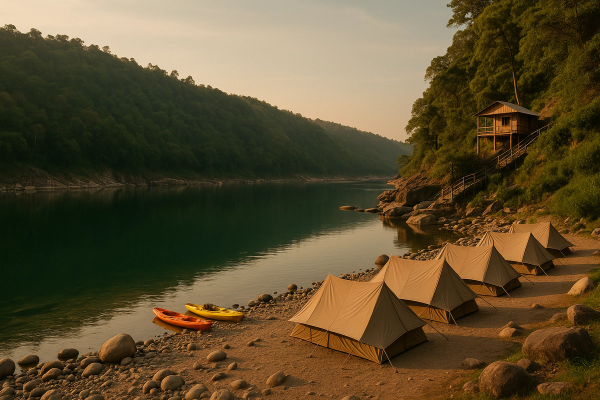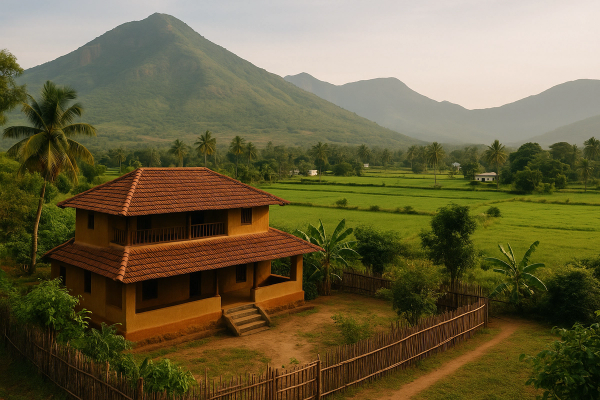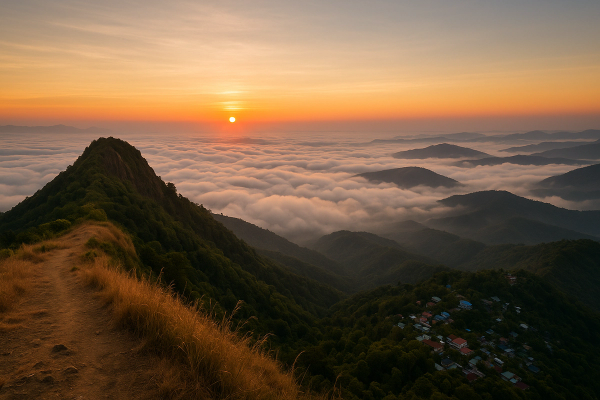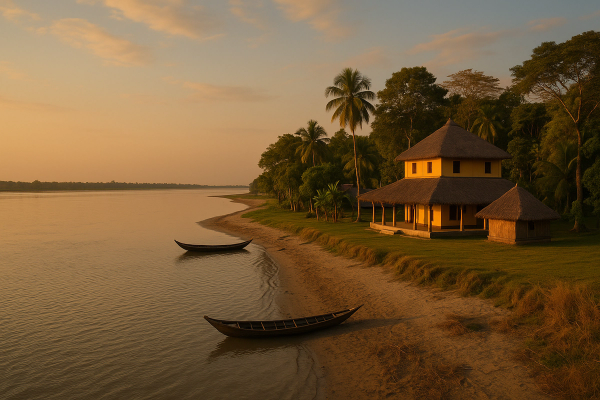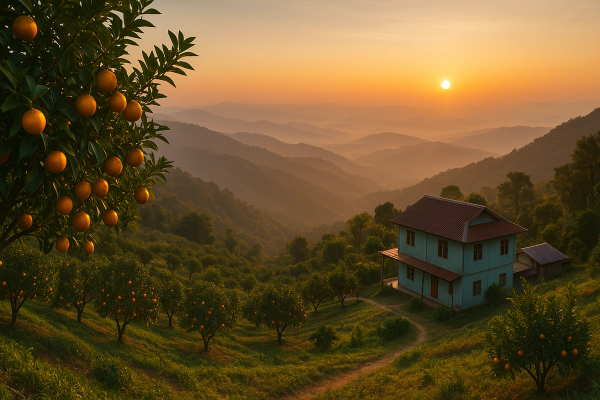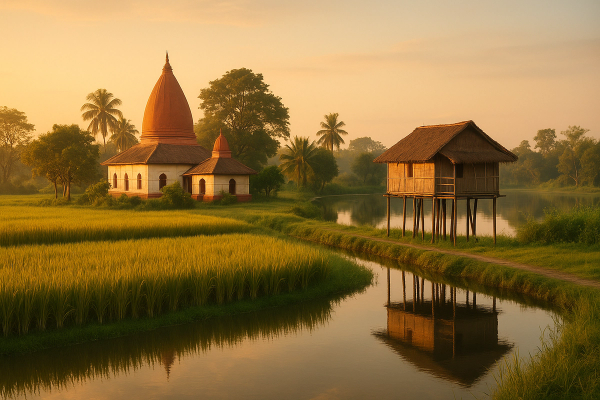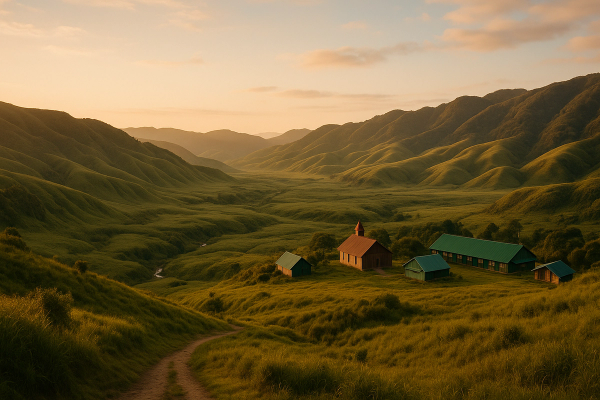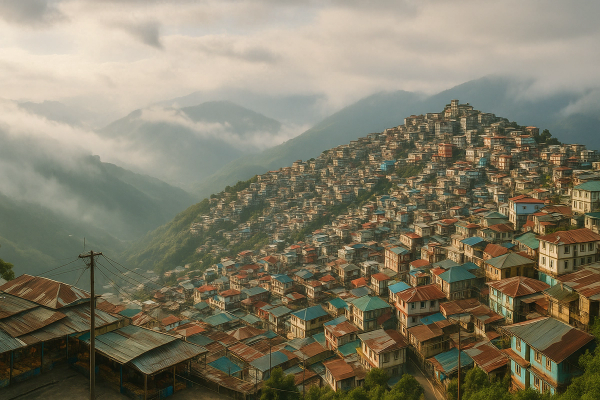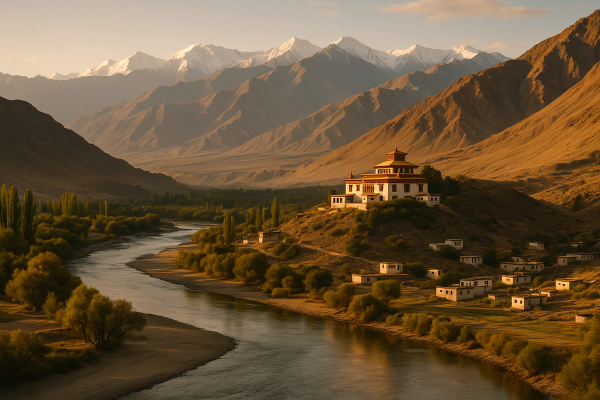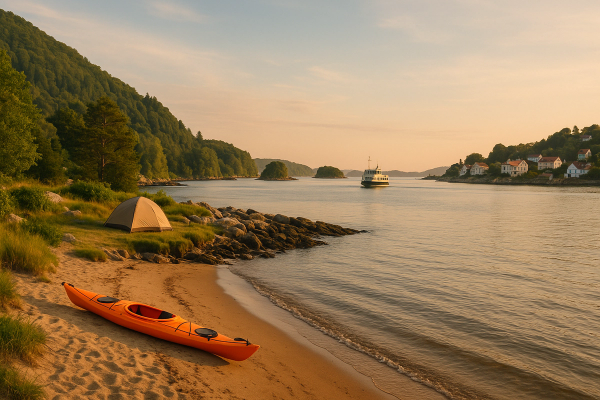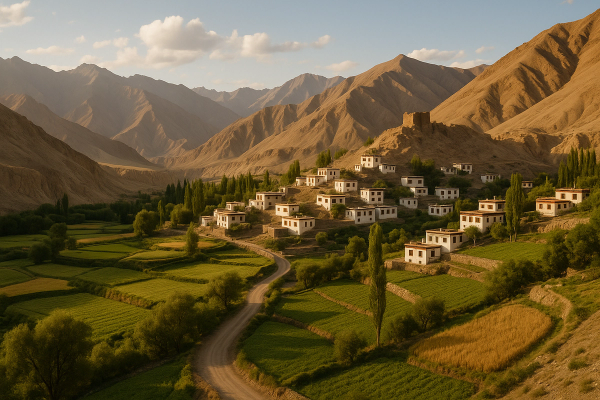Hidden Gems: Top Offbeat Indian Destinations for 2025 — the messy, honest guide I wish someone handed me#
Quick heads-up before we dive in. I don’t pretend to be a flawless all-knowing travel guru, and I’m not here to role‑play as a mysterious backpacker who’s seen every sunset with a cup of chai in hand. What follows is a conversation-style, no‑fluff guide that pulls from up-to-date 2025 info, chats with on-the-ground hosts and guides, and a big messy pile of reader notes and trip reports. It’s the stuff people actually wish they knew before they went. I’m gonna keep it chatty and a bit scruffy, because travel is like that. Real trips have missed buses, weird snacks, and rainy days that turn out better than planned.¶
The 2025 travel scoop you should know first (visa, money, trains, safety)#
Visas and entry: For most nationalities in 2025, India’s e-Visa is the easiest route. You apply online, upload a photo, passport scan, pay the fee, and wait for approval which is usually a few days, sometimes a week if it’s busy. There are short 30-day options and longer multiple-entry visas like 1-year or 5-year. Your passport needs 6 months validity and at least two blank pages. Keep a printed and a digital copy of your e-Visa, because occasionally an airline agent will ask for paper like it’s 2009. If your country had any, um, diplomatic drama in the past couple years, double-check the official Indian Visa Online portal for current eligibility and fees. Things change quietly, and then loudly.¶
- Covid rules in 2025: routine thermal checks sometimes at arrivals, but no test or quarantine for most travelers. Carry proof of vaccination anyway, it still helps in random situations.
- Permits: Parts of the Northeast and border zones need permits. Indians need an ILP for Arunachal, Nagaland, Mizoram, and Manipur. Foreigners usually need special Protected Area Permits in Arunachal and restrictions apply near borders. Sikkim has separate zone rules. Always check the latest state tourism site a week before you go.
- Money and UPI: UPI is everywhere. Foreign travelers in 2025 can typically set up a prepaid wallet that lets you scan those black-and-white QR codes for chai, rickshaws, even homestays. It’s better now than it used to be, but still carry some cash in remote hills.
- Trains: The Vande Bharat network expanded again for 2024–25, shaving hours off some routes. Book via IRCTC or the official app. Waitlists still move, but not like magic. Pack snacks.
- Safety: Monsoon means landslides in parts of the Himalaya and Northeast, usually June to early September. Wildlife zones shut down partially in peak monsoon. Read local advisories, travel light, and buy travel insurance that actually covers evacuation. Don’t skip that line item.
Gurez Valley, Jammu & Kashmir — the quietest jaw-drop I keep hearing about#
Picture an emerald valley folded between huge dark ridges, wooden homes with sloping roofs, the Kishanganga river chewing through the middle, and a sky that looks bigger than normal. That’s Gurez. People rave that it feels like time slowed down and forgot to catch up. Villages like Dawar and Tulail sit in these unreal meadows. The road from Bandipora opens typically late spring after snow clears. 2025 safety brief? It’s along the Line of Control, so security is visible. Domestic travelers have been doing road trips here more often these last couple of seasons. Foreigners may face restrictions or need special permissions depending on current rules, so check with local police or the DC office in Bandipora before you set your heart on it. If you can go, go slow and respectful. No drones without permission. No off-trail nonsense.¶
Where to sleep and what it costs: Homestays are the vibe. Expect ₹1500–3000 a night including basic meals. It’s simple, sometimes very simple. Electricity can flicker. The trade-off is stars like you wouldn’t believe and hot bread off a tawa. Connectivity exists but it sputters. Not a place to Zoom call your boss. Best months are late May to early October. June sees flowers and that first rush of green. Carry cash. And patience.¶
Ziro Valley, Arunachal Pradesh — pine-scented air and the long hum of evenings#
Ziro isn’t flashy. It’s rice fields, stoic pines, mist that wanders in and takes its time leaving. Home of the Apatani people and that slow, careful rhythm of hill life. The Ziro Festival of Music usually lands around late September, and 2025 is expected to be busy after a couple of packed years. If you hate crowds, aim for shoulder weeks on either side, when homestays have time to chat and the trails are yours. Permits note: Indians need ILP for Arunachal. Foreigners need a Protected Area Permit, and there are rules about where you can go and for how long. Time the paperwork at least a week in advance, two if you’re anxious like me. In 2025 some travelers reported smoother ILP portals and faster approvals, but don’t rely on speed when weather can throw schedules off anyway.¶
Costs and stays: Ziro homestays run ~₹1800–3500 with meals. Boutique eco-lodges hover around ₹4500–8000. Local rice beer at dinner. Bison grass notes in the air. Walk the Hong village lanes in late afternoon when the shadows get long and the kids wave and run, still my favorite description from a couple that wrote me in April. Small fires, big skies.¶
Majuli Island, Assam — stilted homes, satras, and a river that rewrites the map every year#
Majuli isn’t just an island. It’s living culture and silt and a constant conversation with the Brahmaputra. The vaishnavite monasteries here, the satras, still hold traditional dance and mask-making that feel as alive as the river. Ferries connect from Nimati Ghat, and schedules can wobble with water levels, especially during monsoon. In 2025, travelers reported more frequent early morning boats but afternoon runs can get canceled when winds pick up. You can bring bikes across. It’s flat and perfect for a lazy pedal with the smell of wood-smoke drifting. Keep an eye out for erosion zones. Things move here, literally.¶
Stays and prices: Bamboo huts and homestays from ₹900–1800. A few fancier eco-places go ₹3000–6000. Food is simple, fish thalis are a thing of gentle joy, and tea is tea is tea, endless refills. Late Oct to Feb is clearest weather. Summertime gets steamy. Oh, and mosquitoes love creative people, bring repellant that actually works.¶
Sainj Valley, Himachal Pradesh — the quieter cousin of the noisy cousins#
Everyone yells about Tirthan and Jibhi now, right. Sainj is the not-so-loud sibling, tucked inside the Great Himalayan National Park buffer. Wooden Himachali homes. Forests that start dense and get denser. Apple orchards and those clipped little meadows where you just sit and listen. 2025 road updates have made access easier, which is the good news and… the future crowd risk. Go weekdays if you can. Shoulder your pack and do easy day hikes towards Shangarh meadows. That little temple there looks like it was placed by hand in the exact right spot. Good trail etiquette is non-negotiable here. Pack-out rule is serious. Locals care.¶
Costs: Homestays ₹1200–2500 for a basic room, sometimes with timber floors that creak in the night. Boutique stays are now ₹3500–7000. No big resorts yet, thankfully. Good 4G in patches, but storms can knock it out. Summer and autumn are best. In winter, a dusting of snow can shut a couple tiny roads, and that’s okay. Hot chai, thicker socks.¶
Dzukou Valley, Nagaland–Manipur border — a green bowl made for long, quiet exhale#
If you’ve ever seen a photo of rolling green hills that look stitched together, that was probably Dzukou. The trek isn’t long-long, but it’s a climb. Start early, carry water, and don’t underestimate slippery steps when clouds roll in. The famous summer bloom can be insane in a good year. In 2025 the talk is mostly about responsible camping, fire safety, and trail caps when the bloom spikes. Nagaland ILP rules apply for Indians entering Nagaland. Foreigners have to check the latest entry formalities and where they’re allowed to trek that week. Weather can change in twenty minutes here. That’s not a warning, it’s a promise.¶
Costs: Guwahati to Kohima buses or share-cabs. Trekkers’ huts on the ridge are basic, like really basic. Carry warm layers even in June. Homestays around Viswema or Zakhama villages that act as trailheads are ₹1500–2500. No plastic-bottle nonsense on-trail please. The streams are fragile.¶
Bhitarkanika National Park, Odisha — crocodiles, mangroves, and that thick starchy heat#
I swear more people talk Sundarbans and forget Bhitarkanika exists. It’s wild, in the literal sense. Giant saltwater crocs basking like armored logs, a web of creeks, bird calls that bounce. You get in by boat with a registered guide and permits are sorted via the forest department. Peak wildlife months are winter when migratory birds pile in. 2025 updates from boat operators say slots on weekends are filling faster than pre-2020 levels, so advance-book weekdays if you can. Warning that should be obvious but isn’t: keep arms inside the boat. Seriously. This is not a zoo.¶
Costs: Day boat safaris can be ₹3000–7000 depending on boat size and route. Forest rest houses and a newer crop of eco-stays hover ₹2500–6000 per night. Bring sunscreen, hat, and some extra patience for tide timings. Mosquitoes are not your friends here either. Carry malaria-grade repellant in monsoon shoulder months.¶
Dholavira, Gujarat — a city of stones and wind, and the silence is part of the story#
Out on Khadir Bet, surrounded by the Great Rann, sits Dholavira, a UNESCO World Heritage Site that feels like time is stacked in neat lines of stone. 2025 travelers noted better signage and that excellent on-site museum that got a glow-up in recent years. The wells, the rainwater harvesting, the urban planning from the Indus Valley people — it’s quietly mind-blowing. It’s not a place for loud groups or rushed itineraries. You walk slowly, you read, you look at the horizon and let the heat do its thing. Winter is gold here. In summer your brain melts a little, in a wok.¶
Costs and logistics: Bhuj is your gateway. Self-drive rentals are common now from Bhuj or Ahmedabad. Homestays in Khadir/nearby villages cost ₹1500–3500. A couple of desert camps and boutique stays run ₹5000–10,000. Sunsets on the salt are blindingly beautiful. Carry water like you mean it. Nothingness is the whole point.¶
Bera & Jawai, Rajasthan — leopards draped on granite, a strange calm in the dry light#
Bera is a cluster of villages near the Jawai Bandh where leopards hang out in rocky outcrops like they own the place, which they do. It’s not a tiger-park circus, it’s quieter. Spotting is early morning or crisp late afternoon, with expert trackers who know these cats like neighbors. 2025 trend is upmarket camps with conservation talk that actually funds camera traps and community projects. Still, please ask where your money goes, be that person. You’re looking for ethics, not just tent fabric count.¶
Costs: Leopard drives are pricey. Expect ₹4000–8000 per person per drive at mid-range camps, and high-end lodges can charge more. Stays range ₹3500–12,000 depending on how fancy. Winter is peak. Shoulder months are sweaty but cheaper, with fewer vehicles. Don’t pressure a guide to push closer to a cat. Wait. The best sightings happen when you’re not in a hurry.¶
Chettinad, Tamil Nadu — tiled floors, limewash walls, and kitchens that smell like stories#
South of Madurai, the Chettinad region is a miracle of mansions built by the Chettiar community, all columns and courtyards and patterned tile you want to steal with your eyes. 2025 has more heritage stays opening small wings to travelers, carefully, because these are family homes. Food is the calling card: peppery chicken, fragrant rice, crisp dosas with chutneys that just keep landing on your plate. Pace is slow. You wake up to birds and quiet. You take your shoes off a lot.¶
Costs: Heritage homestays ₹4000–9000 for doubles with breakfast. Fancier restored mansions can push ₹12,000+. Day tours of mansions range ₹500–₹1500 per person depending on access. Best months are November to February. Carry cash for small artisan purchases. Tile dealers will tempt you. Remember airlines hate overweight luggage. Your back will too.¶
Pangi Valley, Himachal — the road feels like a rumor until you’re on it#
If you think Spiti is getting crowded in peak season, Pangi is the old-school antidote. Accessed via Sach Pass when it opens, usually late summer into early autumn, it’s a raw, cliff-hugging, hold-your-breath kind of landscape. 2025 road update chatter is about patchwork improvements and the annual game of Will-The-Pass-Open-On-Time. It’s never a guarantee. When it does, the hamlets feel removed from the whole influencer bustle. It’s you, the road, a bus that can’t possibly be that wide, and a valley that looks carved by giants.¶
Costs: Homestays ₹1000–2000. Few guesthouses a bit higher. Food is simple and soul-friendly. This is not the place for last-minute anything. Plan for fuel, cash, and flexible dates. If the pass doesn’t open the week you’re eyeing, don’t force it. Mountain weather has the final vote.¶
Harsil & Gangotri shoulder, Uttarakhand — deodar dreams and apple-laden mornings#
Harsil is a line of tall trees and river-song on the road to Gangotri, but it’s a place in its own right. Most folks rush past. Slow down. 2025 sees more small homestays adding a couple of rooms, still family-run, and still warm in that unpolished way that makes you linger. Day hikes to Dharali, Sitla, Mukba village. Off-season, the valley is thin with people and thick with the sound of water. Shoulder months around May and late September are brightest. In monsoon, landslides are a reality. Keep one extra day in your plan so you’re not that frantic person at the taxi stand.¶
Costs: Cozy stays ₹1500–3500 with dinner that tastes like an aunt cooked it. Buses exist but shared jeeps are faster. Offline maps will save your bacon if the network keels over. The water is glacier-cold and so clean it makes you want to behave better.¶
Araku Valley, Andhra Pradesh — coffee hills, tunnels, and a train that’s half the fun#
Araku is reached by a train that scribbles through a necklace of tunnels from Vizag, which is already half the trip. In 2025, more weekenders are coming in, but midweek still feels quiet. Coffee plantations are the soft hum in the background, tribal museums have small exhibits worth an hour or two, and Borra Caves are like stepping into a movie set. Go early to beat tour buses. Shoulder months outside school holidays are perfect. Food is hearty and a little spicy and always filling, your stomach will write you thank-you notes.¶
Costs: Comfortable homestays and small resorts ₹2500–6000. Day tours in a private car from Vizag are ₹3500–7000 depending on stops. Grab the morning train if you can. In monsoon, the valley turns a fierce green but the rain can be constant. Bring a real rainjacket, not a fashion experiment.¶
2025 planning notes I keep about permits, timing, and what actually goes wrong#
- 1. Permits first, not last. For Arunachal, Nagaland, border valleys in Kashmir, and even parts of Sikkim, read the official state tourism or DC office pages. Screenshots are your friend when data dies.
- 2. Monsoon is beautiful and also not your pal for landslides. June to early Sept in the Himalaya and Northeast, build buffer days. Down south, monsoon timing shifts by coast. Always ask a local host for the current mood of the sky.
- 3. Work-from-anywhere in 2025 is big, but uplink isn’t. UPI is reliable, 4G less so. Download offline maps and carry a power bank that could jump-start a tractor.
- 4. Cash rules where QR codes don’t. ATMs in small towns run dry on festival weekends. Withdraw in big hubs. Split cash between pockets like a squirrel.
- 5. Health: filtered water, ORS sachets, a small med kit that you actually know how to use. Mosquito control in lowlands and coastal areas. Up high, sunscreen that you respect.
How much you’ll spend in 2025, roughly — with the usual caveats and a shrug#
Let’s talk money without pretending it’s exact. Homestays in remote hills are still the king of value at ₹1200–3500 a night including at least one meal. Eco-lodges and boutique stays are widening the gap at ₹4000–10,000, sometimes more if they’re doing full-board and guided walks. Wildlife safaris or specialized treks add a lot per day, ₹3000–8000 easy. Intercity trains remain budget-friendly. Vande Bharat seats cost more than regular express trains but they shave hours off your life wasted in transit. Domestic flights fluctuate wildly with festivals and school holidays. Book early for winter. Food-wise, dal-chawal and thalis are still saintly cheap. Hip cafes in mountain towns are delicious and will tax your wallet and your patience on weekends. This is all ballpark. Prices bump during festivals, long weekends, and when Instagram discovers a new doorway.¶
Safety and etiquette: tiny things that change your trip for the better in 2025#
- Ask before photos, especially of elders and kids. A smile and a few words in the local language go a long way. Learn hello, thank you, and that gentle head bobble. It matters.
- Border areas like Gurez can have sudden rule changes. Foreign travelers especially should check the local police station or DC office. Don’t rely on a blog from 2017. I mean, please don’t.
- Wildlife spaces aren’t theme parks. In Bera, if a guide edges too close to a leopard for your selfie, say no and mean it. Your money talks.
- Trash and plastic rules are strict in fragile valleys. Carry a small trash bag. You’ll feel oddly proud walking out with your own waste.
- As of 2025, most states do emergency weather alerts on WhatsApp or SMS. Ask your host to forward them during bad spells. Landslides and sudden river swells aren’t jokes.¶
What I’d bundle for these trips in 2025, besides an unreasonable number of socks#
An eSIM that works across circles, but offline maps anyway because rocks don’t care. Two power banks. A proper rain shell. Sunhat that doesn’t make you cry when it blows off. Water filter bottle so you’re not buying plastic every hour. Copies of permit emails and soft copies in your phone. Headlamp, not just your phone light. Good walking shoes and chappals that can get wet. Simple gifts for hosts if you’re staying in a homestay — tea, a small spice tin, something thoughtful and light. Earplugs for buses. Patience for everything else.¶
Travel in 2025 is less about finding a place nobody knows and more about showing up softly — spending time, tipping well, asking better questions, leaving fewer marks, and then telling the story in a way that helps the next person do the same.
So, which one first?#
If you want mountains and quiet, pick Sainj or Harsil first. If you’re after culture that hums under the skin, Chettinad or Majuli. Wild stuff with boats and birds and hungry reptiles, Bhitarkanika. Leopard drama and unreal sunsets, Bera. Ancient stones and salt flats? Dholavira. The trek itch is Dzukou. And if the idea of a slow valley inside a big peace makes your heart do that weird little flip, keep an eye on Gurez and its current permissions. Any of these can be a first or a fifth trip. You’ll come back different either way.¶
Final little post-it notes for 2025#
- Book permits and trains early, then loosen your grip on the rest. The best stuff isn’t on your spreadsheet.
- Respect rest days. Your body isn’t a robot. Even if mine pretends some mornings.
- Talk to people. Ask your host where they take their kids on Sundays. Eat that thing you can’t pronounce.
- Leave a place better, cleaner, and maybe slightly richer because you came. That feels like the only trend worth caring about.¶
If you try one of these hidden-ish gems this year, ping me what surprised you — what went wrong, what went right, what tasted like forever for a minute. I’ll keep updating this guide as 2025 rolls on and rules shift. For deeper dive stories and more places locals swear by, I end up browsing AllBlogs.in way more than I mean to — it’s a nice rabbit hole when you’re planning the next escape.¶




